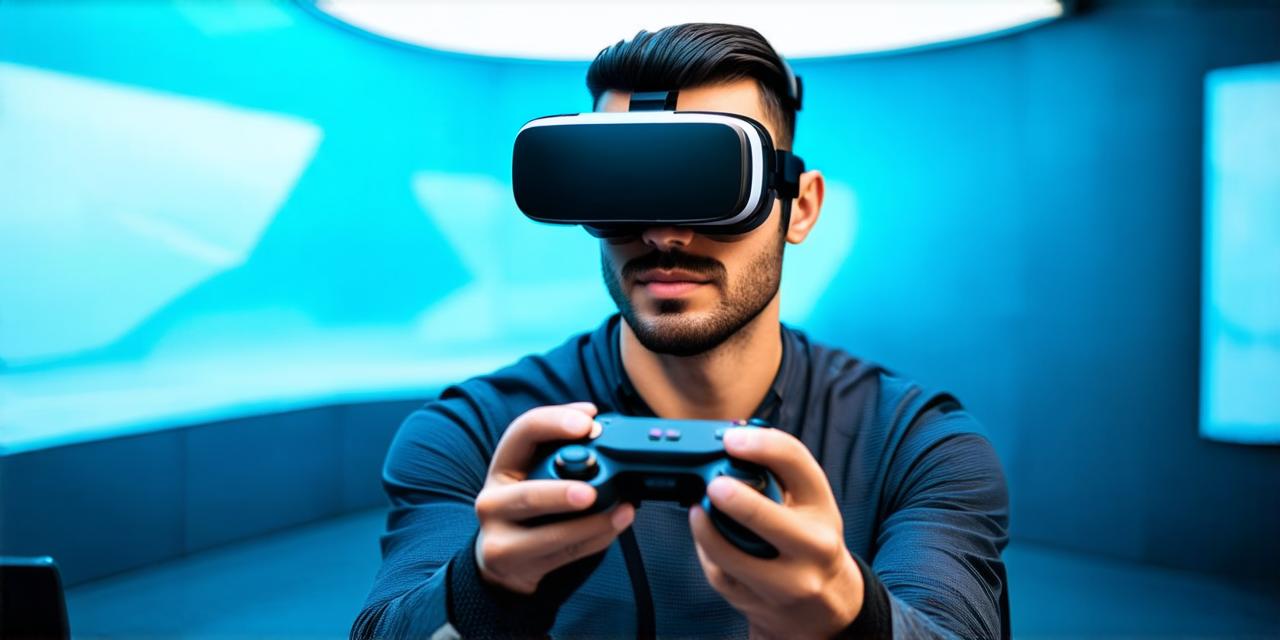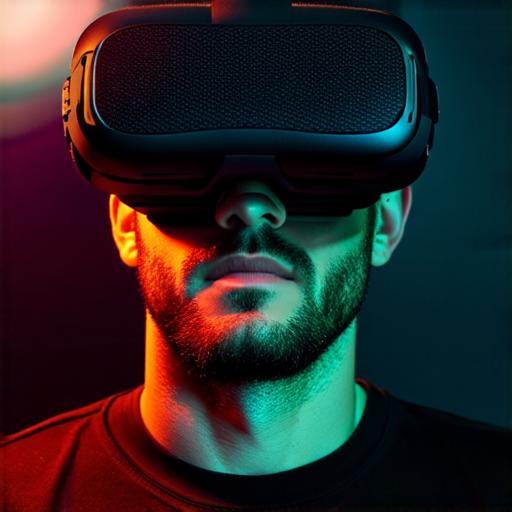
What does a virtual reality headset do?

What is a Virtual Reality Headset?
A virtual reality headset is a device that sits on the user’s head and tracks their movements in real-time. It consists of two displays, one for each eye, that are positioned at slightly different angles to simulate depth perception. The headset also has sensors that track the user’s head movement and adjust the image accordingly, creating an illusion of movement and immersion.
How Does a Virtual Reality Headset Work?
The VR headset works by using stereoscopic displays, which are two separate screens that display slightly different images to each eye. This creates an illusion of depth perception, making objects appear closer or farther away depending on where they are positioned in relation to the user’s eyes.
In addition to the displays, the VR headset also uses sensors to track the user’s head movement. These sensors use infrared technology to detect changes in the position of the head and adjust the image accordingly. This creates a sense of immersion and allows the user to move within the virtual environment as if they were physically present.
The VR headset also has built-in audio, which helps to further immerse the user in the virtual environment. The audio is synchronized with the visuals, creating a seamless experience that engages the senses and enhances the overall immersion.
Real-life Examples of Virtual Reality Headsets in Action
Virtual reality headsets have numerous applications across various industries, including gaming, education, healthcare, and more. Here are some real-life examples of virtual reality headsets in action:
- Gaming – VR headsets are widely used in the gaming industry to create immersive and engaging experiences for players. Games like Beat Saber, Half-Life Alyx, and Skyrim VR use VR headsets to transport players into virtual worlds where they can interact with objects and environments in real-time.
- Education – Virtual reality headsets are being used in education to create immersive learning experiences for students. For example, students can take virtual field trips to historical sites or explore the solar system from the comfort of their classroom.
- Healthcare – VR headsets are being used in healthcare to simulate surgical procedures and train medical professionals. This allows them to practice and perfect their skills in a safe and controlled environment.
- Training – Virtual reality headsets are also being used for training purposes, such as military simulations and emergency response training. These simulations allow trainees to practice complex scenarios in a realistic and safe environment.
FAQs about Virtual Reality Headsets
1. What is the difference between a VR headset and an AR headset?
VR and AR are two different technologies that create different types of immersive experiences. VR creates a fully immersive experience by blocking out the real world, while AR overlays digital information onto the real world. Examples of VR headsets include Oculus Quest 2 and HTC Vive, while examples of AR headsets include Google Glass and Microsoft HoloLens.
2. Can I use a virtual reality headset without a computer?
Some virtual reality headsets require a computer to function, while others can be used without one. For example, the Oculus Quest 2 is a standalone VR headset that does not require a computer to use. However, some games and applications may require a computer to run on a VR headset.
3. How much space do I need to set up a virtual reality headset?
The amount of space needed for a virtual reality headset depends on the specific model and the type of experience you are trying to create. Some VR headsets, like the Oculus Quest 2, require very little space and can be used in small apartments or homes.


